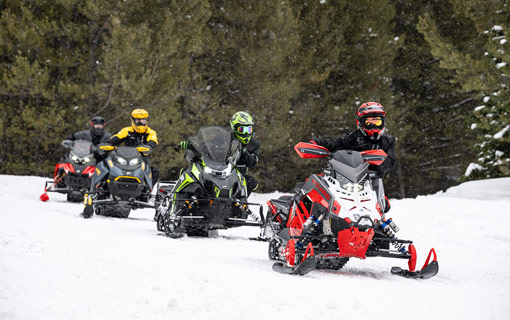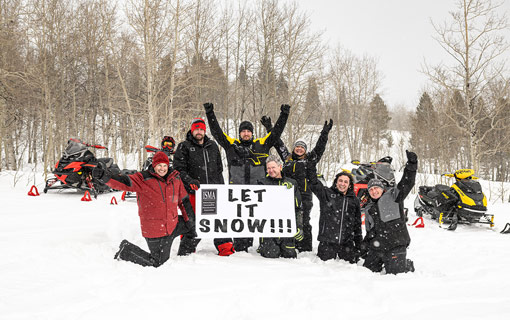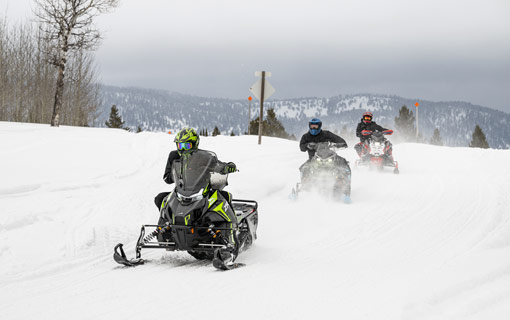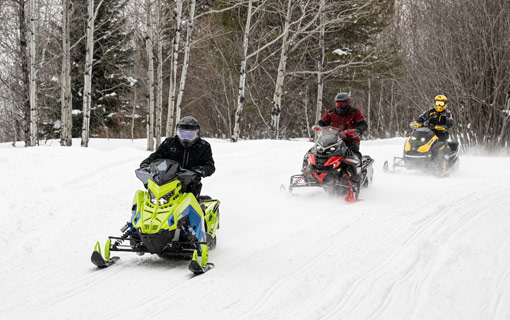Staying Safe while Snowmobiling on Ice
Snomobiling across ice is never a good idea, but ice conditions in early spring—or late season for snowmobilers—can be extremely hazardous and unstable.
While sometimes the shortest point between two places is across a frozen lake or stream, snowmobile riders should consider all frozen bodies of water as potentially dangerous. Some things to keep in mind while snowmobiling across a lake or river in late season:
Listen to the locals: “Pay attention to what the locals are doing,” suggests Jim Rolf, New York State Snowmobile Association state-wide trail coordinator. “If there aren’t any ice shanties, or recent sled tracks on the lake, there shouldn’t be snowmobiles,” he says. He suggests checking with local bait shops, snowmobile clubs and on area social media sites for updates on ice conditions.
Dangers lurk below: While on the surface, especially a snow covered surface, a frozen body of water appears smooth and debris free, that isn’t always the case. Logs, rocks, cracks and ice heaves can appear suddenly, especially in the case of ice heaves, said Rolf. “The wind can move ice and when it does, ice heaves can come up quickly,” he said. Always pay attention to your surroundings and don’t assume that the trail you rode in on is still safe when riding out.
Warming trends: Variations in weather temperatures can cause dangerous ice conditions, including separation from the shore, slush and ice melting underneath. “Warm ups in temperatures and heavy rains really do a number on the ice,” Rolf said. “You can’t always count on the cold to build ice.” In fact, ice under snow can actually be weaker, as the snow acts as an insulator and can warm up the ice. Also, keep in mind ice thickness varies across lakes.
While not many states have actual trails that go across a lake, it’s hard to ignore the call of a frozen, open area. Here are some ways to stay safe while crossing frozen bodies of water:
Float coats: These snowmobile coats keep you warm while also employing a special floatation element which could save your life if you fall through the ice.
Ice picks: Wearing a set of ice picks, or awls, around your neck and threaded through the arms of a jacket won’t take up much space or weight to snowmobile riders. According to the website www.saferiderssafetyawareness.org, if you happen to fall through the ice, the picks will be right at your wrists covered by your jacket sleeves.
Flares or beacons: A set of flares or an avalanche beacon can be very helpful if an accident on the ice occurs by alerting would-be rescuers where you are located.
“No one can guarantee the safety of frozen water,” said Rolf. “Snowmobilers should be aware that when they choose to ride on ice, they do so at their own risk.”
For more information on snowmobile safety, snowmobile associations and clubs and more, visit www.snowmobileinfo.org.
For The Love of Snowmobiling!
Photos
Browse our collection of snowmobile safety videos, public service announcements and snowmobile photos.
Snowmobile safety
These safety resources will ensure your next ride will be a safe and fun one for all!
Posters & projects
Download exclusive snowmobiling posters and our fun kid activities!
News & events
Stay informed about the latest news about our favorite recreation and find a snowmobiling event in your state.














